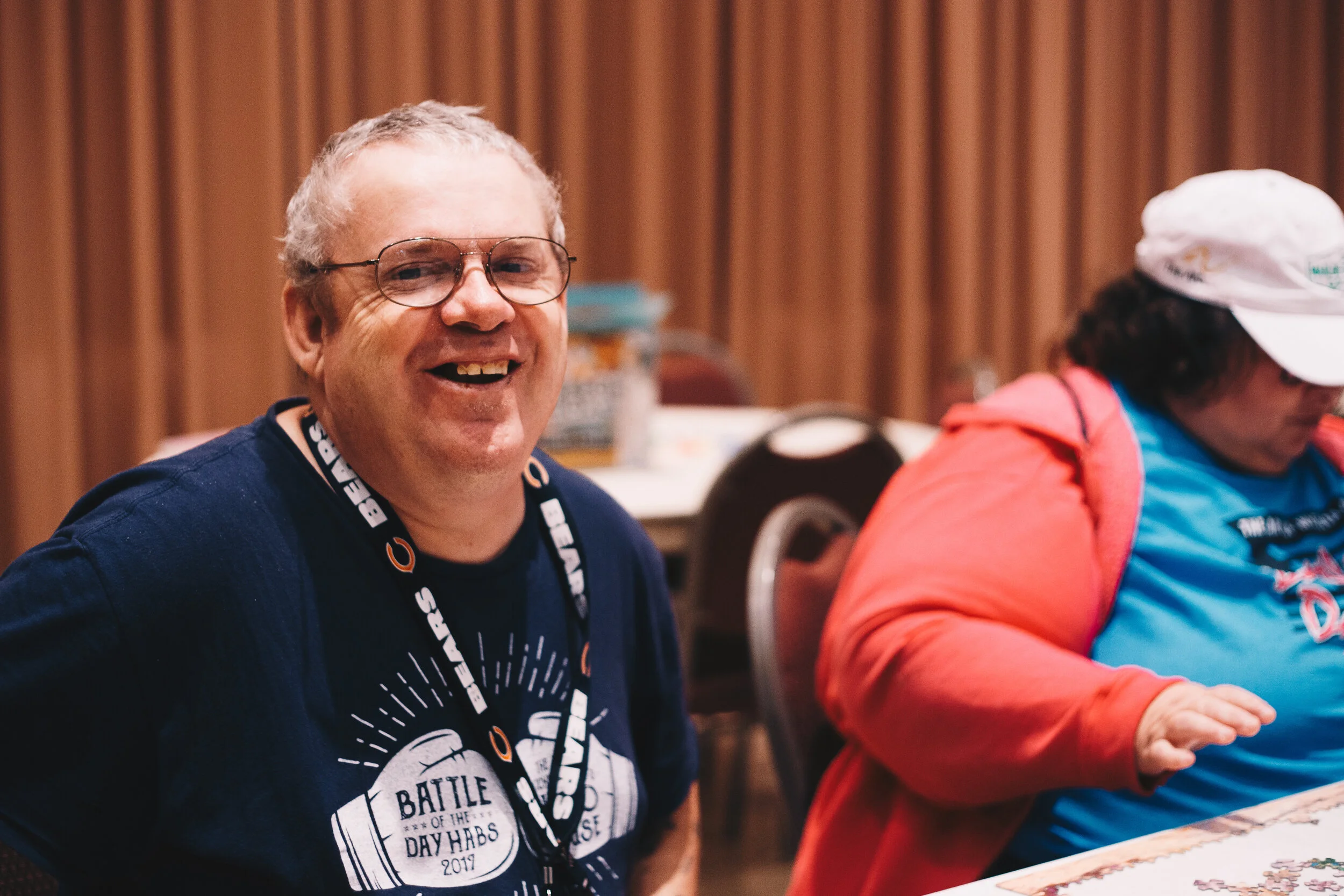This blog post was written by Dr. Frank Del Rio, Psy.D., LPC, CART
Sensory hypersensitivity is common in children and adults with IDD (especially autism), ADHD (Attention Deficit Hyperactivity Disorder), and OCD (Obsessive Compulsive Disorder). Hypersensitivity occurs when any sensory stimuli interfere with environmental stability. Simply put, stimuli (sounds, sights, smells, texture, body awareness, movement, and balance) can cause sensory overload which can result in anxiety, fear, feeling overwhelmed, restlessness, irritability, or anger and may also trigger a fight, flight, or freeze response. The following are suggested strategies that may help both children and adults cope in situations where they experience sensory overload. Just as every person is unique, so are the strategies that work best for you. The strategies under “Anxiety/Feeling Overwhelmed” may also help across a range of sensory triggers. It is important to practice these strategies, plan them out and evaluate them in a calm, safe space. You can check and adapt each strategy to suit your needs.
Anxiety/Feeling Overwhelmed
Strategy
Check-in - Let someone you trust know that you are feeling overwhelmed
Breathing - Breathe in through your nose for (3) counts and out through your mouth for three counts. Young children can hold up five fingers and try to blow them out (like candles on a birthday cake)
Counting/Tracing - Count silently to thirty. Trace up and down each finger on one hand six times
Positive Self Talk - Try positive self-talk statements such as – “I am safe, I can cope, this will be over/different soon”
Change - If you can, safely move away from the stimuli to a calm, quiet or safe place, with less sensory input. (i.e from a room to a hallway)
Movement - Intense bursts of movement or exercise can increase both adrenalin and serotonin. If the environment allows, try jumping jacks, waving arms around or jogging on the spot. If you are self-conscious about this, looking at your watch can help normalise how this may look to others and help you blend in
Hydrate - Hunger and dehydration affect feelings of wellbeing. Taking a drink of water while eating/snacking can be a highly effective strategy to cope with anxiety
Safe Space - If you are at school, work, or other social place (i.e. day habilitation program), go to a safe space such as a breakout room, meeting room, first aid room, or library. Try and plan this in advance and notify a trusted teacher, staff member or lecturer. If you are going to a store or other community establishment,, try to predetermine a safe space you might be able to go to if you start feeling anxious (i.e. a corner of the store, a vacant hallway, near a bathroom, etc)
Visual Overstimulation
Strategy
Check-in - Let someone you trust know that you are feeling overwhelmed
Slow blinking - Blink slowly or close your eyes (for 3 seconds) every 5-20 seconds. This will provide short, sensory breaks if you are in a meeting, performance, or event and is rarely noticeable to others
Up close singular focus - Casually touch your hand to your forehead. This should partially obscure your vision. Focus on the color of your sleeve for 30 seconds, or longer if the situation allows. This provides a change of focus and simplification of focus
Visualization - If you can, practice focusing on a section of the environment. Mentally put a picture frame around the scene and attempt to blank out the rest. This does take practice and guided meditation can help
Redirection - Redirect your attention to a task, comfort item, or fidget by focusing on it. Do not hesitate to be creative and improvise. Rings, watch faces, buttons, pens, key rings, keys can all be effective. Redirection for 30-60 seconds is enough to provide a sensory break
Auditory Overstimulation
Strategy
Check-in - Let someone you trust know that you are feeling overwhelmed
Noise-canceling Headphones - Earbuds can help and are often a simple solution that works but may be uncomfortable. Sometimes earmuffs can be helpful. You can also try some over-the-ear headphones. These work great and are relatively inexpensive
Ear Plugs - Try various products and see which ones help. Some earplugs made of silicone putty and foam earplugs, originally designed for swimming, may work really well
Redirection - Redirect your attention to a task, comfort item, or fidget by focusing on it. This redirection of focus has proven to help block peripheral sound or reduce the impact of environmental noise
Olfactory (Smell) Overstimulation
Strategy
Check-in - Let someone you trust know that you are feeling overwhelmed.
Hold Your Breath - Practice holding your breath comfortably for 30 seconds. This can be enough to allow you to walk past a restaurant, department store perfume section, or pool which are known sensory trigger sources.
Block Your Nose - A mask or scarf can function as a filter and reduce the impact of strong olfactory stimuli. You can use current hygiene etiquette and cover your nose with your inner elbow (which looks as though you are attempting to stop a sneeze).
Mouth Breathing - Minimise sensory triggers by slowly breathing in and out using your mouth only. Combining this with using a mask or scarf as a filter can help
Limit Exposure - Avoiding triggers is almost impossible. Have the expectation that you will encounter triggers, but that you can limit your exposure to them. Know that it is possible to cope and that the exposure should be over quickly. This will help to minimize a panic response
Tolerable Palate Cleanser - Try different sensory palette cleansers. Items such as coffee beans, lemon rind, vinegar, peppermint, and even your own skin can help to quickly override other strong scents. Consider taking an amount with you if you are going on public transport, to a busy market, shopping center or hospital.

